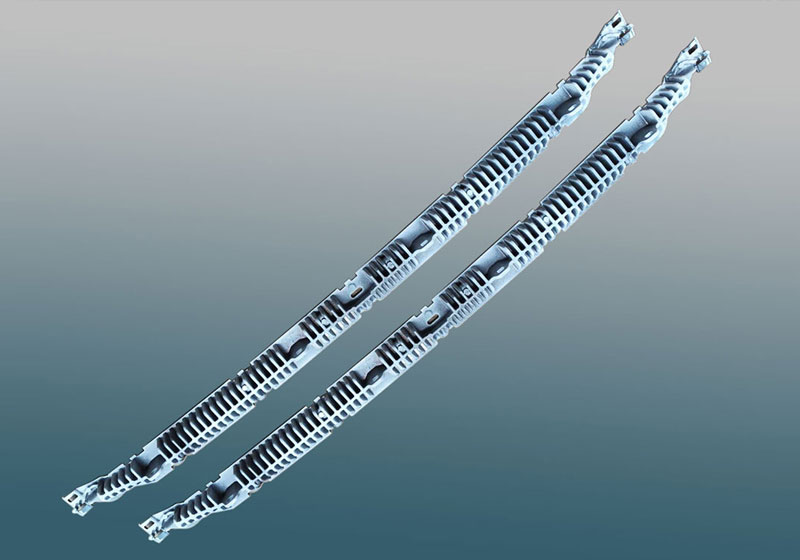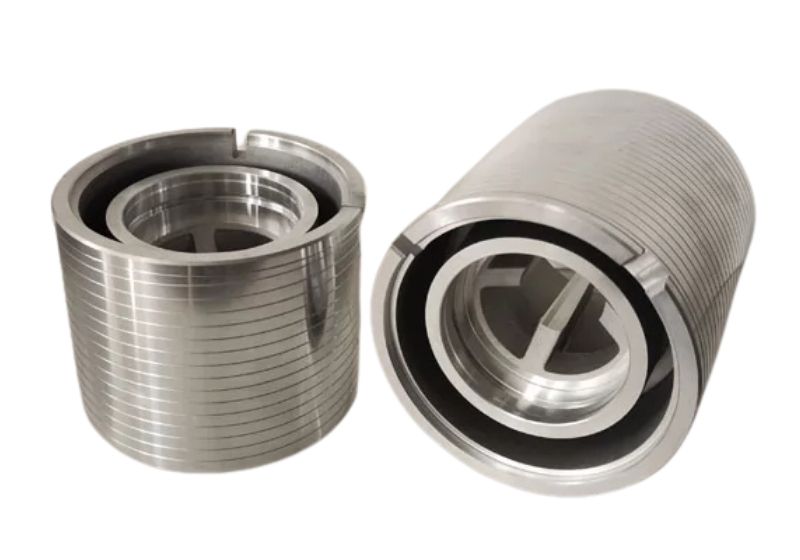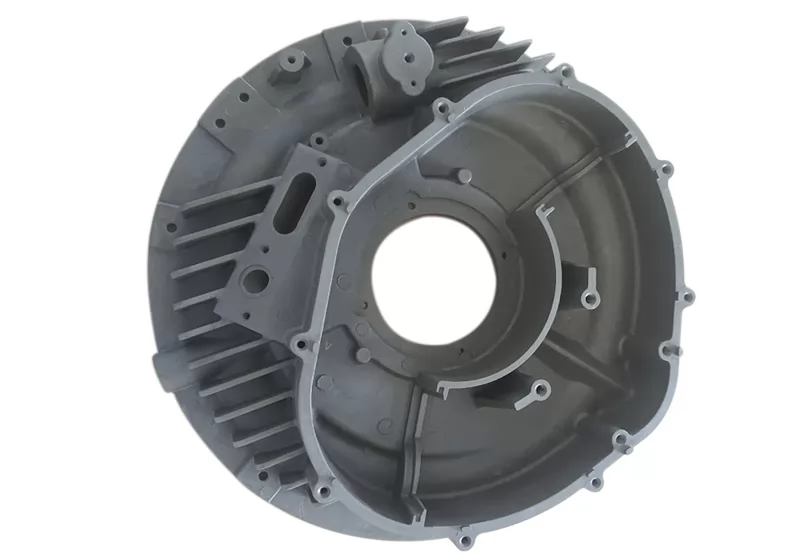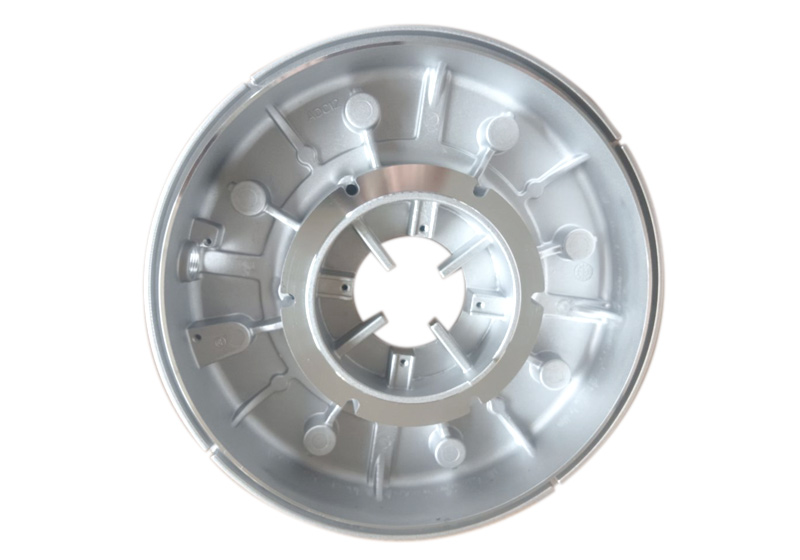| Parameter | Value |
|---|---|
| Part Name | Power Module Enclosure Castings |
| Material | ADC12 |
| Size | 290× 315 × 141 mm |
| Weight | 2060g |
| Process | High pressure die casting + CNC machining |
| Surface Finish | Powder coating |
| Min. Thickness | 3mm |
| Dimensional Tolerances | ISO 8062-mk |
| Surface Roughness | Ra 6.3µm |
| Application | Energy Industrial equipment |
| Certification | IATF 16949-2016 |
This is a customized enclosure for a power integration module, serving as a casting shell in the power system to carry and protect the core electrical components inside the control unit.
1. Product Standards and Requirements:Material ADC12 aluminum; dimensional tolerance grade ISO 2768-mk; flatness 0.3; no visible surface defects; surface roughness Ra6.3µm; coating thickness <1.6µm. PPAP approval must be completed and passed before mass production.
2. Product Challenges:Large structure, deep steps, relatively difficult die casting. Prone to porosity and sticking.
Risk Keywords:complex structure, high precision, porosity, assembly accuracy, zero surface defect
The overall project is of considerable difficulty, particularly testing our mold design capability and quality control capability.
In accordance with the APQP (Advanced Product Quality Planning) process required by the international IATF 16949 standard, we formed a project development team composed of mold designers, casting engineers, machining engineers, measurement engineers, quality engineers, and sales staff to carry out comprehensive product development.
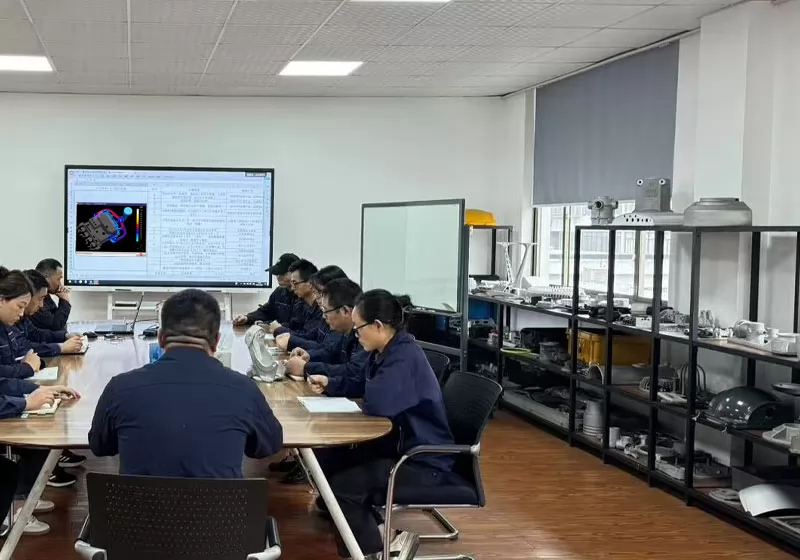
We first conducted DFM analysis and optimized certain structural details to improve manufacturability, then worked with the customer to establish mutually agreed technical specifications and quality standards.
Considering the application environment and performance requirements of this power integration module enclosure, ADC12 was confirmed as the housing material. Based on the material properties and the core design elements of the product, and from the perspectives of technical feasibility, quality stability, and cost control, the final process route was determined as high-pressure die casting + CNC precision machining, using an 800T high-pressure die casting machine.
Subsequently, technical engineers performed mold simulation and mold flow analysis to predict and optimize difficulties and process parameters, and established a preliminary process flow chart and process control plan.
Finally, during subsequent practical processes, the solution was gradually verified, and problems were identified and resolved.
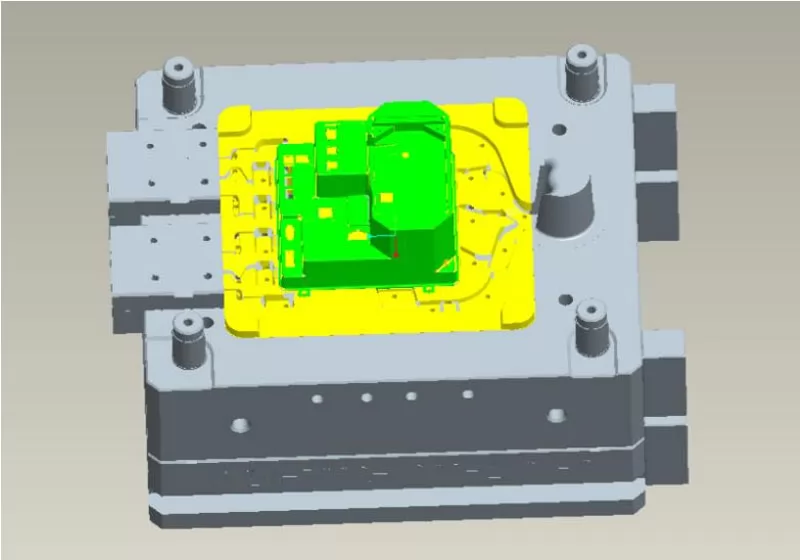
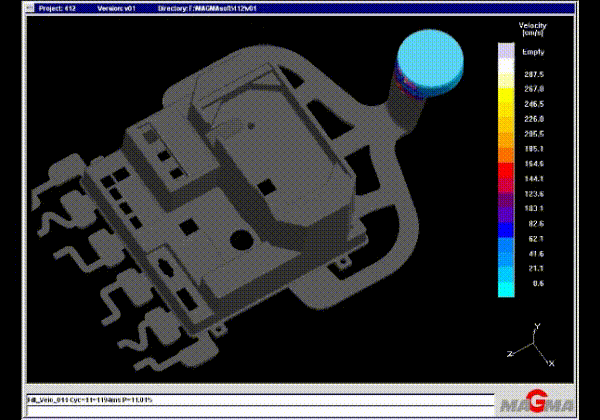
From mold manufacturing, the project officially entered the actual manufacturing stage. We carried out work according to the initial process flow chart, while applying FMEA tools for risk analysis and evaluation of various potential failure modes, and applied SPC (Statistical Process Control) to key parameter data, analyzing with SPC tools for continuous monitoring and improvement.
During the actual manufacturing process, the main key issues encountered were as follows:
During the sampling stage, quality engineers used X-ray inspection and found porosity exceeding the standard in some areas, mainly inside the threaded holes of the housing, which directly affected thread strength and assembly reliability.
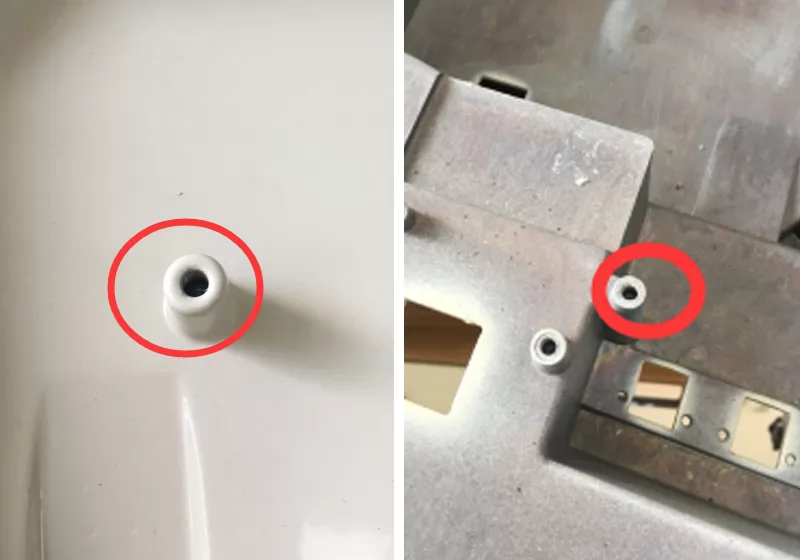
Issue: Porosity in threaded holes exceeded standards.
The development team conducted technical investigation and optimization, comparing various improvement schemes. The final solution was:
Change the original threaded hole design to pin design, allowing smoother molten metal flow during filling and easier gas evacuation.
After implementing this solution, actual verification over multiple batches of more than 100 pieces showed significant improvement, with product yield rate reaching nearly 100%.
In the same sampling stage, quality engineers detected obvious sticking and cold shut on some products.
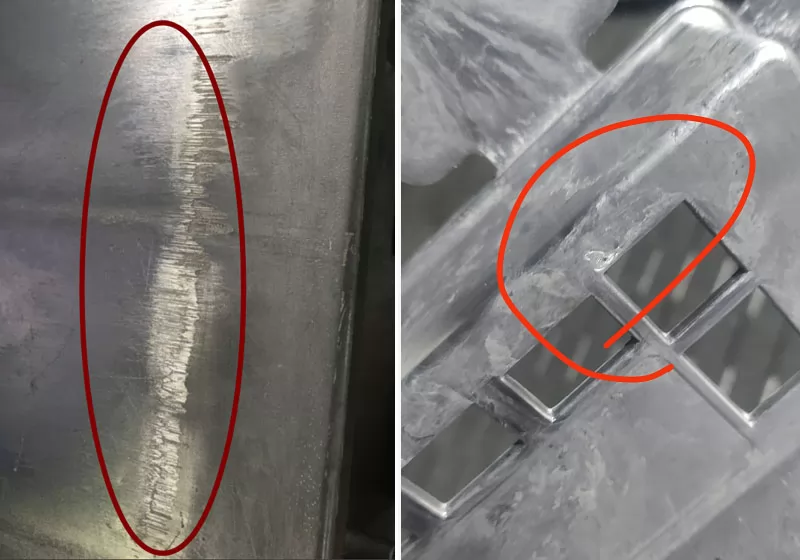
The team analyzed and reviewed the sticking issue, concluding it was mainly caused by insufficient draft angle leading to friction between casting and mold. Combined with cold shut issues, the following measures were taken:
1. Increase draft angle by 1°
2. Optimize ejection system
3. Increase local release agent spraying in areas prone to sticking
4. Optimize die casting parameters, adjusting automatic injection speed, intensification position, etc.
After these optimizations, multiple batches of samples confirmed that sticking and cold shut issues were eliminated.
The entire development process was a systematic process of identifying and controlling quality risks and continuously optimizing processes. The power integration module enclosure project team, with its rich experience and solid technical expertise, carried out technical reviews and repeated verification at every process stage, systematically identifying and overcoming potential risks, and established detailed work instructions for each process.
Quality engineers strictly followed the IATF 16949 quality system and implemented the full APQP process requirements to achieve complete quality control. During the process, FMEA, SPC, MSA, and process control plans were established and executed to prevent potential process risks and quality risks, and to control quality variation. Finally, PPAP documents were completed and approved by the customer, laying a solid foundation for mass production.
Inspections were arranged throughout the process: first article inspection, in-process inspection, and final inspection, with complete inspection data records established to ensure traceability and verification of all quality data.
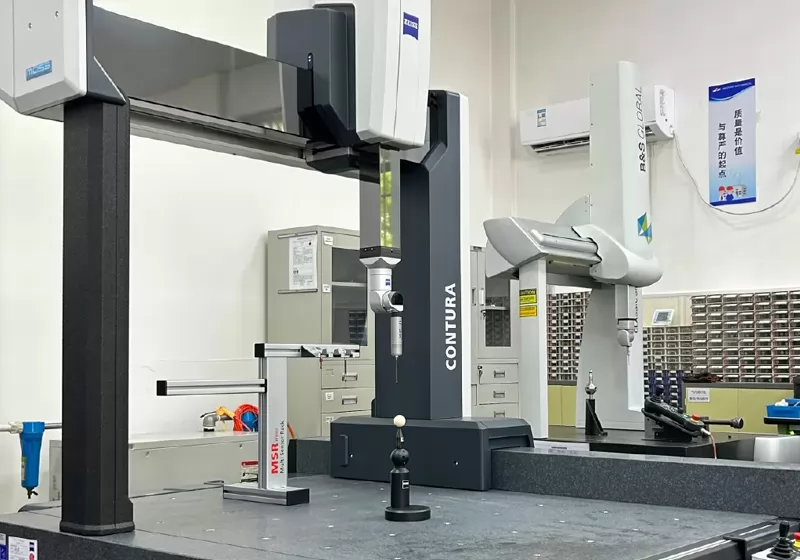
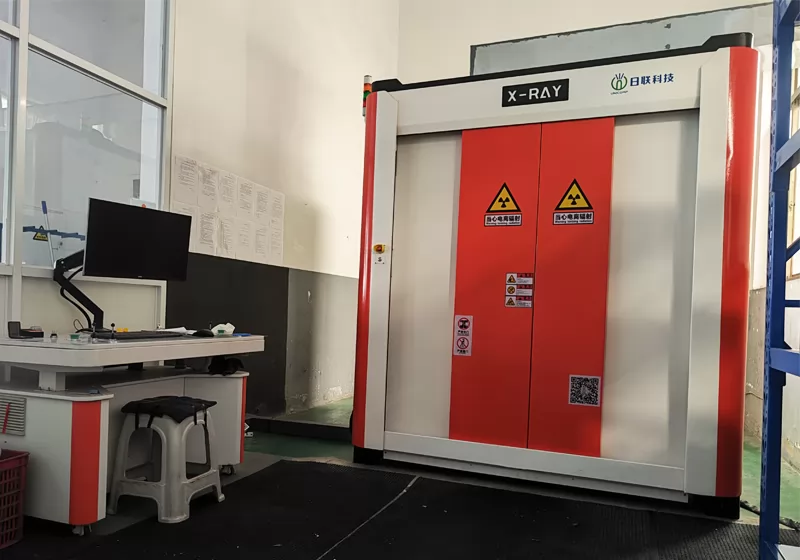
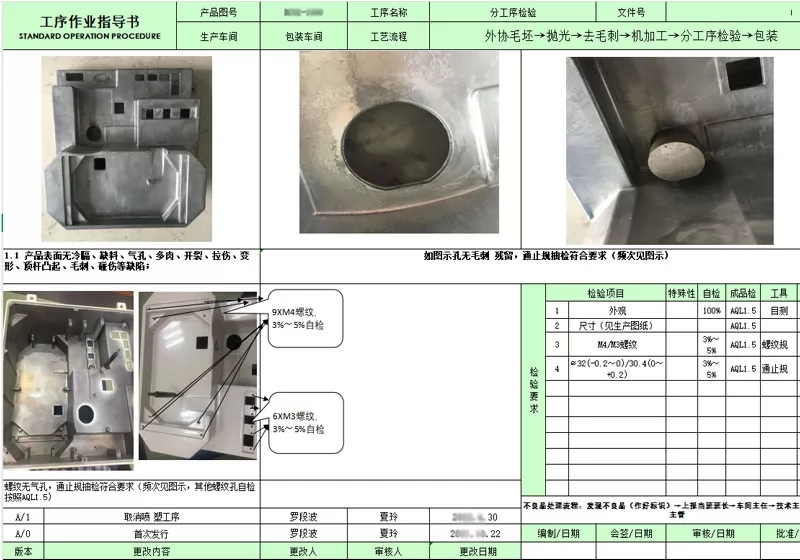
Final Product Indicators:
1. Finished product tolerance grade ISO 2768-mk, including flatness 0.3, all meeting standard requirements.
2. Product surface free of cold shut, short shot, porosity, flash, cracking, deformation, or dents, compliant.
3. PPAP completed and approved by customer.
The development of this power module enclosure aluminum casting by Innovaw, with its high technical difficulty and strict comprehensive performance requirements, served as a test of the manufacturer’s overall capability. Through our solid expertise in high-pressure die casting, precision CNC machining, and consistent quality management system, we successfully overcame challenges and delivered a high-quality product that met and even exceeded customer expectations. This fully demonstrated our casting development team’s professional capability in systematic problem analysis and rapid closed-loop improvement for complex structural parts.
Mould making→Melting→High Pressure Die Casting→Cutting the sprue and riser→Polishing→Deburring→Machining→Packaging & inspection
We ask for 3D models or detailed 2D drawings. Samples may also be provided for pricing purposes. Please also provide specific details such as the product quantity, annual demand, raw materials, and dimensional tolerances. We accept 3D models in .PRT and .SLDPRT formats, as well as neutral formats such as .IGS, .STP, and .X_T.
100
Because the customer's product demand and complexity is different, need to use different die-casting or casting process, so the delivery time is not the same, we will be with the customer before booking the contract for delivery time confirmation. tooling lead time: 5-8weeks according to different parts; first samples lead time: 1-3weeks after tooling ready. mass order lead time: 5-7weeks
we will use 8D tool to process customer's complaint, define root cause and improvment actions.
